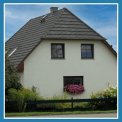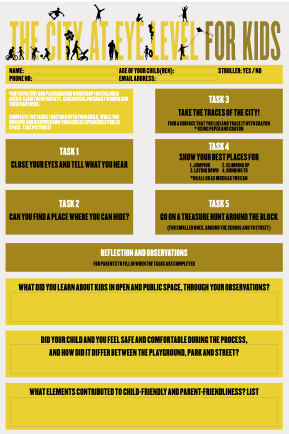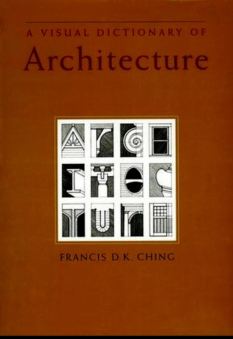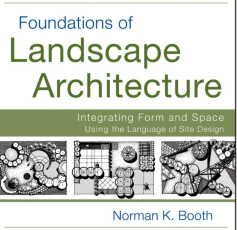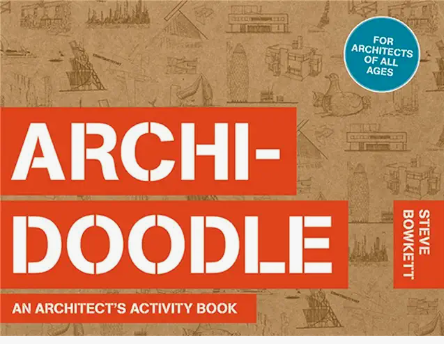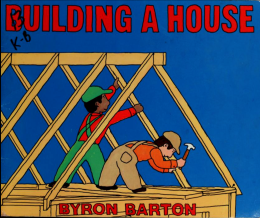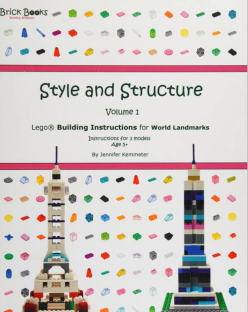Architecture
Show children how architecture changes the way you feel in a space
 Discuss with your kids how each environment might make them feel, and why certain design choices can affect emotions and behavior. This hands-on approach can help them understand the powerful impact of architectural design on our experiences and feelings.
Discuss with your kids how each environment might make them feel, and why certain design choices can affect emotions and behavior. This hands-on approach can help them understand the powerful impact of architectural design on our experiences and feelings.
Spatial Awareness
Teach kids to measure spaces using their bodies and understand human scale in relation to buildings
![]() Activity! Human Bridges
Activity! Human Bridges
Challenge your child to build a bridge using their own body! How many versions can they come up with?
![]() Activity! Architecture via Human Bodies
Activity! Architecture via Human Bodies
Teach some basics using your bodies!
![]() Activity! Three Type Drawing
Activity! Three Type Drawing
Challenge child to create more complexity using the simple tools they have a grasp on already. For example, if a child has mastered circles, challenge them to color a complex picture using only that shape. Remember to show them an example of how to draw thick and thin lines, to add to the diversity in their piece.
Figure-Ground
 Figure-ground theory is a fundamental concept in urban design and architecture that analyzes the relationship between built mass (buildings) and open space in urban environments. Understanding the objects and their background is equally important.
Figure-ground theory is a fundamental concept in urban design and architecture that analyzes the relationship between built mass (buildings) and open space in urban environments. Understanding the objects and their background is equally important.
![]() Activity! Blank Space
Activity! Blank Space
Using painters tape, let child place tape anywhere on the page (or sidewalk). Color the whole page using whatever paints, crayons or chalk you choose. Remove tape. Ask child to do it again - this time, with the understanding that where there is tape - there will be white (or background color). Explore how to use that.
![]() Activity! Shadow Drawing
Activity! Shadow Drawing

Find a comfortable place to draw - lay out paper and a variety of objects. Ask child to trace objects shadow. Try to make the object's shadow big on the paper (bigger than the actual object).
![]() Activity! Empty Space Drawing
Activity! Empty Space Drawing
(from Archidoodles)


Implied and Voids
Implied space and void are important concepts in architecture that contribute to the overall design and experience of a building. Architects use these concepts to create a sense of spaciousness, play with light and ventilation, enhance visual appeal and guide movement.
![]() Activity! Paper Cutout Silhouettes
Activity! Paper Cutout Silhouettes
Have child cut simple shapes (like buildings or trees) out of dark paper and arrange these on a light background
![]() Activity! Finding Faces
Activity! Finding Faces
We are naturally drawn to see faces and patterns in the complex world around us. Go on a hunt to conscously find faces in the surrounds around you.
![]() Activity! Lego or Block Structure
Activity! Lego or Block Structure
Challenge kids to build structures leaving deliberate gaps or openings. Discuss how these imply windows, doors, interior spaces or something else.
Scale and Proportion
![]() Activity! Proportion Challenge
Activity! Proportion Challenge
Challenge child to build the same structure once with a small amount of blocks (3 block base) and a second time with more blocks (10 block base).
![]() Activity! Skyscrapers
Activity! Skyscrapers
Provide black paper background and white paper to make the buildings. Ask children to make sure one person or car is in the picture to show proportions.
![]() Activity! Paper Cities
Activity! Paper Cities
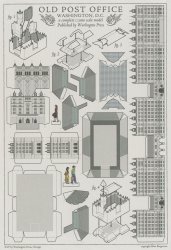

Make famous buildings and bridges out of paper. Try this old post office. Make sure to print and cut out the people to show scale!
![]() Activity! Dollhouse
Activity! Dollhouse
Build a simple dollhouse and start considering the size of the furniture to fit in the dollhouse.
![]() Activity! Cardboard Box City
Collect various sizes of cardboard boxes. Have children create a miniature city, considering the scale of buildings in relation to each other. Encourage them to include human figures to understand human scale
Activity! Cardboard Box City
Collect various sizes of cardboard boxes. Have children create a miniature city, considering the scale of buildings in relation to each other. Encourage them to include human figures to understand human scale
![]() Activity! Minecraft
Activity! Minecraft
If your child loves this game, challenge them to create
- A Museum
- Underwater world
- Rollercoaster ride
- Famous building
- Off planet colony
- Playground design
- Traditional architecture
- Skyscraper
- Building in a tree
- Yurt
Organization of a Space
![]() Activity! Three Ways
Activity! Three Ways
Go to your room. Look at your table or bookshelf. Consider three different ways to organize the space. Take a picture of each space when you finish organizing it. Consider the three pictures and choose the one that best suits your needs. Explain why you chose it.
![]() Activity! Playground and Plaza
Activity! Playground and Plaza
Create an outline of your own favorite playground and ask for a redesign. Alternatively, make an outline of a familiar building and grounds. Ask child what they would like to see there - greens? A sitting area? A playground?
![]() Activity! Patterns in Design
Activity! Patterns in Design
(from District Architecture Center)
Key words: Symmetry, Asymmetry, Patterns and Facades (fronts of buildings).
Take a walk and look for patterns, (three trees of the same size, colors on the sidewalk etc). Ask for observations of geometric shapes that create different patterns around you. What materials are the objects made of? Are the patterns symmetric or asymmetric?
![]() Activity! Corner House
Activity! Corner House

Try drawing a corner house together. Then each drawing it alone. For younger kids, simplify the image and let child do filling in with colors or gluing paper on to the image, as a creative experiment. For older children, ask for ten or twenty of the same corner house done in different styles (this doesn't have to be done on the same day or at the same sitting).
Stress, Strain and Force
![]() Activity! Free Body Diagrams.
Activity! Free Body Diagrams.

You can learn how to visualizes the forces acting on structures using this method.
![]() Activity! Shapes' Strength
Activity! Shapes' Strength
Out of cardboard create a pyramid, dome and cube. Drop the same amount of weight on each and see which can withstand the most impact.
![]() Activity! Love of Domes
Activity! Love of Domes
Construct a geodesic dome using plastic straws. You can join them with play dough or pins and foam. Will it bear more weight than a cube or pyramid made from straws?
![]() Activity! Tallest
Activity! Tallest
![]()

Start by asking child to build the tallest block building they can. Measure it and write down the result. Now create these triangular paper towers and see if the structure is taller.
![]() Activity! Clay Compression Test
Activity! Clay Compression Test
Shape modeling clay into small cylinders. Stack books on top and measure the height change. (Calculate stress (weight of books / clay surface area) and strain (change in height / original height))
![]() Activity! Triangle Truss Bridge
Activity! Triangle Truss Bridge
Choose a truss bridge to try. Use popsicle sticks and a strong glue.
![]() Activity! Compare to Da Vinci
Activity! Compare to Da Vinci
Compare your truss bridge to the famous Da Vinci bridge. Which can hold more weight?
Equilibrium
Structures must be in static equilibrium, meaning the sum of all forces acting on them must be zero. This ensures that the structure doesn't collapse or deform under the weight of its own mass and external loads.
![]() Activity! Equilibrium Game
Activity! Equilibrium Game
Games like Jenga can give child a visual understanding of balance.
![]() Activity! Arch Building
Activity! Arch Building
Provide materials like paper, cardboard, or foam blocks. Challenge kids to build arches that can support weight. Explain how arches distribute forces to achieve equilibrium
![]() Activity! Balancing Sculpture
Activity! Balancing Sculpture
Use various materials (e.g., wire, clay, found objects). Create sculptures that balance on a single point. Discuss center of gravity and how it affects stability
Environmental Awareness

Teach children to observe and analyze their surroundings, encouraging them to think about how buildings interact with their environment. Encourage children to build forts, treehouses, or simple structures.
![]() Activity! Natural Light Observatory
Activity! Natural Light Observatory
Observe how natural light enters buildings and discuss its benefits for energy conservation. Take children to some unusual public buildings and notice out loud how light enters and effects your experience. Cut some different shapes into boxes and flash light into the box to see the effect.
![]() Activity! Urban Heat Island Effect
Activity! Urban Heat Island Effect
Use a thermal camera app (like Seek Thermal or ThermalOn) to show differences in temperature. Start with in your own living space. Check the difference of temperature in the morning and afternoon. Check South facing window areas verses other facing areas. Which is the hottest? Which is the coolest?
Next try the difference between concrete areas (are the differences between various colors of concrete?) and green areas (are the differences between wooded areas, lawns and shrubbery?).
![]() Activity! Rain Garden Design
Activity! Rain Garden Design
Plan and create a small-scale rain garden to manage stormwater runoff from buildings. First find the right spot: a good clue is a downspouts from gutters or low spots in the yard. Second, check the soil - sandy soil drains quickly, clay holds water. Fill the hole with water and if it drains within 24 hours, it is suitable for a rain garden. Three, dig 6-12 inches down. Use the dirt to create a berm (raised edge). Four, improve the soil by adding compost, sand and layers of gravel. Five, choose some native plants that tolerate wet and dry conditions (try coneflowers, black-eyed Susans and native grasses). Initially water plants well. Check your rain garden on dry days.
Introduce different architectural styles from around the world, connecting architecture to culture, history, and geography.
Outside Shelters
Child-centered Design
 What would a neighborhood or city center look like if it had the health, safety, accessibility, interactiveness, and stimulation of children in mind while creating or modifying it?
From the micro to the macro - we could change our idea of an urban landscape to include the children that grow up there.
The different stakeholders, including parents, children, urban planners, and trainers, could collaborate on the design, considering an education, play, health (mental and physical) and environmental aspects.
What would a neighborhood or city center look like if it had the health, safety, accessibility, interactiveness, and stimulation of children in mind while creating or modifying it?
From the micro to the macro - we could change our idea of an urban landscape to include the children that grow up there.
The different stakeholders, including parents, children, urban planners, and trainers, could collaborate on the design, considering an education, play, health (mental and physical) and environmental aspects.
Building Challenges
![]() Activity! Draw It
Activity! Draw It
Before you breakdown your child's building ask them to draw it. If they aren't in the mood to do it right then and there, take a picture and ask them to do it at another time.
Popsicle sticks construction
Popsicle sticks and playdough
Popsicle stick treehouse: popsicle sticks, glue, branch, cardboard - Get a sturdy stick and secure it to cardboard. Allow child to glue popsicle sticks and cardboard to create a foundation and from there build on it something creative.
Blocks and books
Marshmallows and toothpicks
Build small bridges using dry spaghetti and marshmallows
Paper Bridge Challenge:
Make a space the length of an A4 piece of paper. Give child paper and ask them to use this to hold the greatest number of coins (get your pennies out!). Every variation the child tries, place the pennies on the bridge and write down the total.
Traditional Meets Modern
Mud Plus Watch a small intro to Singhania's Work Read an article with the Architect Shipra Singhania
Bamboo Introduction to Aroty Panyang Bamboo Structures Read an article about Studio Aro
Mycelium fire proof insulation
Resources
Architects Read Architect Books for Kids



